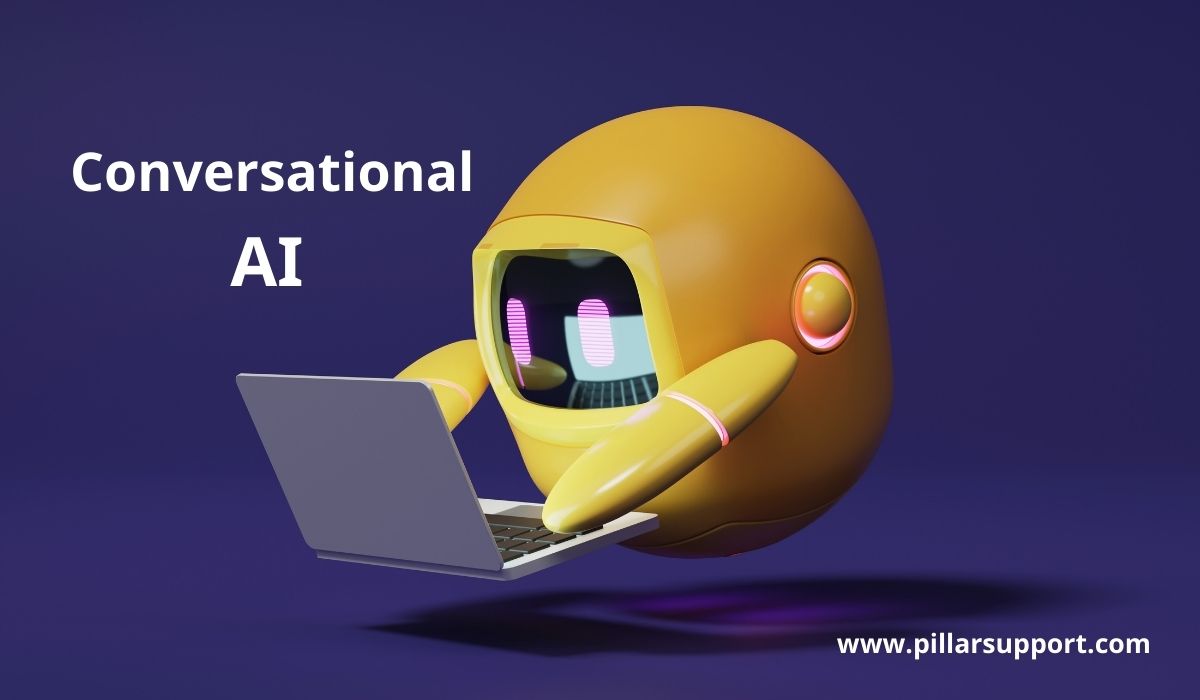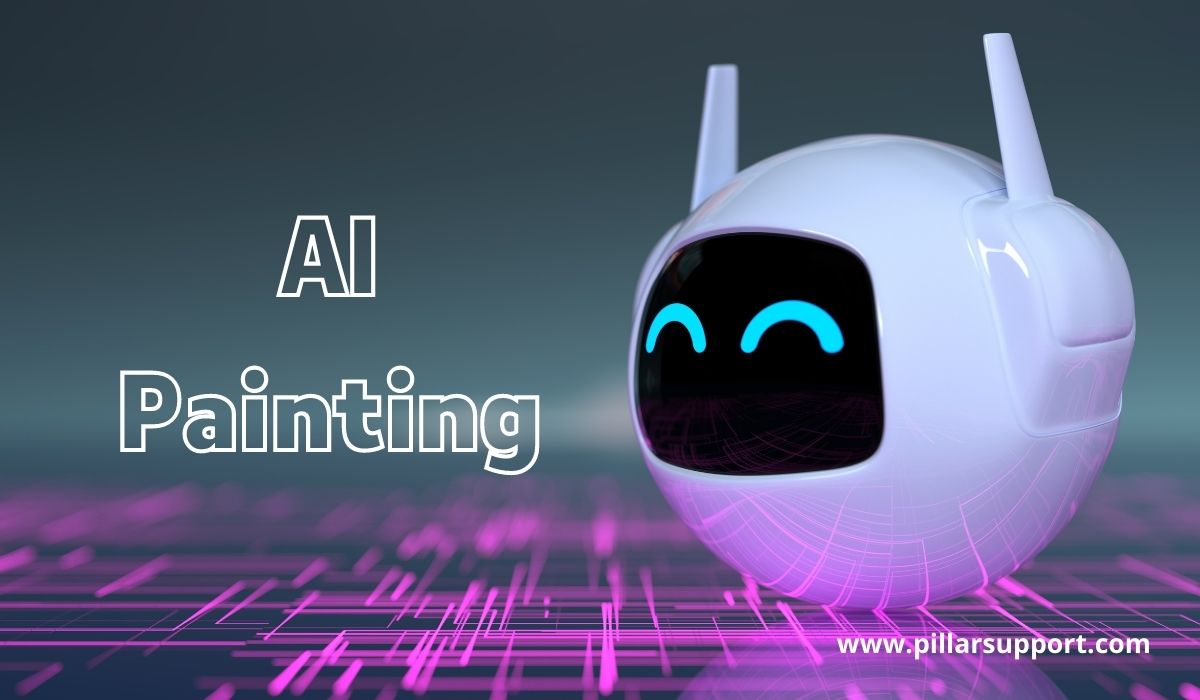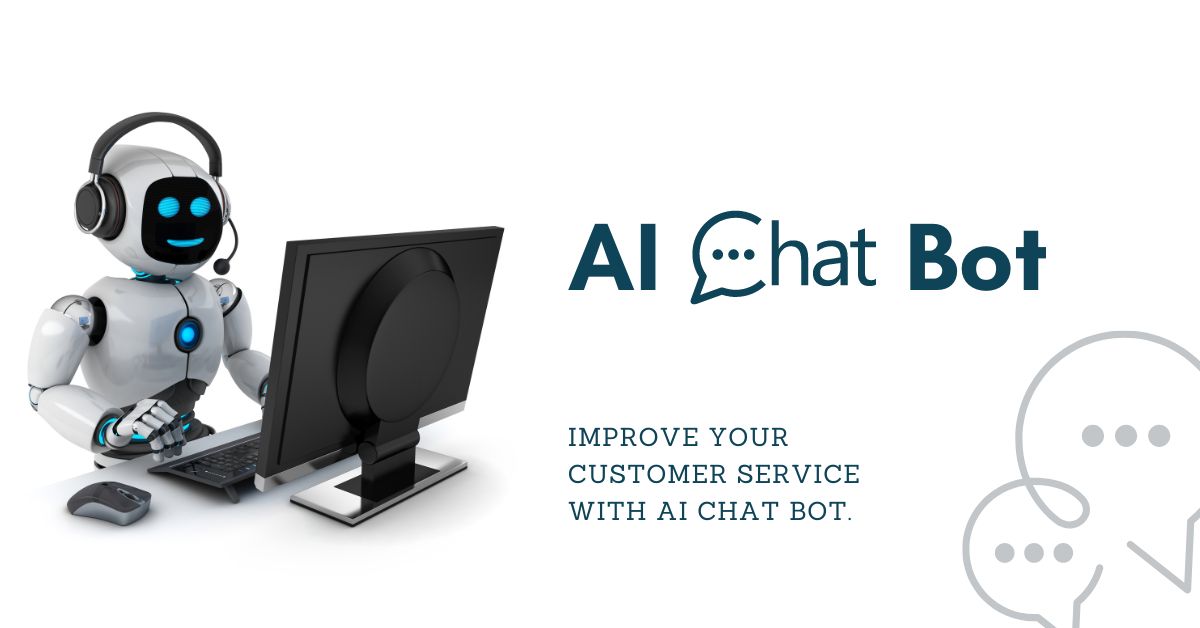Unleashing the Power of Open Source AI: Advancements and Opportunities
Open source AI has become a significant force in the tech landscape, revolutionizing the way artificial intelligence is developed, shared, and utilized. At its core, open source AI refers to AI technologies and frameworks whose source code is made freely available to the public. This open access allows developers, researchers, and businesses to collaborate, modify, and build upon existing AI models, fostering a culture of innovation and cooperation.
The significance of open source AI lies in its democratizing power, enabling widespread access to cutting-edge AI technologies and tools. By promoting transparency, community-driven development, and knowledge sharing, open source AI has become a driving force behind advancements in the field of artificial intelligence. This has paved the way for accelerated research, improved applications, and a diverse range of AI solutions that cater to various industries and use cases.
In this blog, we will delve into the world of open source AI, exploring its impact on the tech landscape, the benefits it offers to developers and businesses, and the collaborative ecosystem it creates to drive AI innovation forward. Let’s uncover the role of open source AI in fostering a thriving AI community and propelling us into an era of boundless possibilities.
Table of Contents
Understanding Open Source AI
Open source AI projects are AI technologies and frameworks whose source code is made freely available to the public. Unlike proprietary AI solutions, which are developed and owned by specific companies, open source AI projects allow anyone to access, use, modify, and distribute the underlying code. This fosters a collaborative and transparent environment where developers and researchers from around the world can contribute, share knowledge, and collectively enhance the technology.
The accessibility of open source AI is one of its most significant advantages. By making the source code freely available, open source AI projects democratize access to advanced AI technologies, leveling the playing field for developers and researchers regardless of their financial resources or organizational affiliations. This open access approach encourages a diverse range of contributors and perspectives, leading to a more comprehensive and well-rounded development process.
Advantages of using open source AI for developers and researchers extend beyond accessibility. Some key benefits include:
- Flexibility and Customization: Open source AI frameworks can be tailored to suit specific needs and use cases. Developers can modify the code to address unique requirements, ensuring a more personalized and efficient AI solution.
- Rapid Prototyping and Innovation: Open source AI enables rapid prototyping and experimentation, accelerating the development cycle. Researchers can build upon existing models and algorithms, allowing for faster innovation and breakthroughs.
- Community Collaboration: The open source AI community fosters collaboration, knowledge sharing, and peer review. Developers and researchers can engage with experts from diverse backgrounds, gaining insights and feedback that lead to improvements.
- Continuous Improvement: With a global community of contributors, open source AI projects are continuously updated and refined. This ensures that the technology remains up-to-date, secure, and aligned with the latest advancements.
- Cost-Effectiveness: Open source AI eliminates the need for costly licensing fees associated with proprietary solutions. This cost-effectiveness opens doors for startups, educational institutions, and small businesses to leverage cutting-edge AI capabilities.
Overall, open source AI empowers developers and researchers with the tools and resources needed to drive innovation and create transformative AI solutions. By embracing openness and collaboration, the open source AI community continues to shape the future of artificial intelligence for the benefit of all.
Open Source AI Frameworks and Tools
TensorFlow
Developed and maintained by Google, TensorFlow is one of the most widely used open source AI frameworks. It offers a flexible ecosystem for building and training machine learning models, including deep learning neural networks. TensorFlow’s extensive community and rich documentation make it a popular choice for a wide range of AI applications, including computer vision, natural language processing (NLP), and reinforcement learning.
PyTorch
PyTorch is an open source AI framework developed by Facebook’s AI Research (FAIR) team. It has gained popularity for its dynamic computational graph, which allows for easier debugging and more intuitive model development. PyTorch is highly favored by researchers and academics due to its ease of use and strong support for research-oriented tasks.
Keras: Keras is an open source neural network API written in Python. While it can run on top of TensorFlow, Microsoft Cognitive Toolkit (CNTK), or Theano, it is now a part of TensorFlow and serves as its high-level API. Keras is known for its user-friendly interface, enabling developers to quickly prototype and experiment with deep learning models.
Scikit-learn
Although not exclusively focused on deep learning, Scikit-learn is a popular open source machine learning library for Python. It offers a range of algorithms and tools for data preprocessing, feature selection, and model evaluation. Scikit-learn is a great choice for traditional machine learning tasks and is often used in conjunction with other deep learning frameworks for end-to-end AI solutions.
Apache MXNet
Apache MXNet is an open source deep learning framework developed by the Apache Software Foundation. It is designed for efficiency and scalability, making it suitable for both cloud and edge computing applications. MXNet’s ability to work seamlessly across different platforms and languages has contributed to its widespread adoption.
Hugging Face Transformers
Hugging Face Transformers is an open source library that provides pre-trained models and utilities for natural language understanding tasks. It has gained popularity for its extensive collection of pre-trained language models, making it easier for developers to integrate powerful NLP capabilities into their applications.
OpenAI Gym
OpenAI Gym is an open source platform for developing and comparing reinforcement learning algorithms. It provides a collection of environments and tools for training and testing agents using various reinforcement learning techniques.
These open source AI frameworks and tools have democratized AI development, enabling researchers and developers to innovate and collaborate in creating cutting-edge AI solutions. Whether it’s for computer vision, natural language processing, or reinforcement learning, these open source resources have played a pivotal role in advancing the field of artificial intelligence.
Contributions and Community in Open Source AI
The AI community plays a crucial role in the development and growth of open source AI projects. Collaboration and contributions from a diverse group of developers, researchers, and enthusiasts drive continuous advancements in the field. Here’s how the AI community’s involvement fuels progress in open source AI:
Collaborative Development
Open source AI projects thrive on collaboration. The community collaboratively works on enhancing existing features, fixing bugs, and developing new functionalities. Developers from various organizations and backgrounds contribute their expertise, ensuring a robust and well-rounded development process.
Code Review and Feedback
In open source AI projects, peer code review is a fundamental practice. It helps identify potential issues, ensures code quality, and provides valuable feedback to improve the project. The collective expertise of the community ensures that the codebase is continuously refined and optimized.
Diverse Perspectives
The AI community is diverse, comprising individuals from different regions, cultures, and professional backgrounds. This diversity brings a broad range of perspectives and experiences to the table. It encourages the exploration of new ideas and approaches, leading to innovative solutions.
Rapid Innovation
With contributions from a vast community, open source AI projects can evolve rapidly. New research findings, algorithm improvements, and best practices are shared and implemented quickly, pushing the boundaries of what AI can achieve.
Knowledge Sharing
Open source AI projects are built on the principle of knowledge sharing. Developers openly share their work, research, and discoveries, fostering a culture of learning and growth. This culture of knowledge sharing accelerates the development and democratization of AI technology.
Accessibility and Inclusivity
Open source AI projects are typically freely available to the public, making AI accessible to a wider audience. This inclusivity promotes equal opportunities for learning and experimenting with AI, regardless of financial constraints.
Community Support
Open source AI communities offer support channels where developers can seek help, share ideas, and collaborate on problem-solving. This support network fosters a sense of camaraderie and empowers newcomers to get involved and contribute.
Reproducibility and Transparency
The transparency of open source AI projects allows researchers and developers to validate and reproduce results. This ensures that AI models and methodologies are well-documented and can be verified by the community.
Overall, the AI community’s collaborative efforts in open source projects are instrumental in driving advancements in AI technology. Through knowledge sharing, inclusivity, and collective expertise, open source AI has become a driving force in shaping the future of artificial intelligence.
Open Source AI in Research and Academia
Open source AI has had a profound impact on the research and academic communities, transforming the way AI research is conducted and accelerating progress in the field. Here are some key aspects of its impact:
- Democratizing Access to AI: Open source AI frameworks and tools have democratized access to AI technology for researchers and academics worldwide. Instead of developing AI algorithms and models from scratch, researchers can leverage existing open source solutions, saving time and resources.
- Reproducibility and Transparency: Open source AI fosters a culture of reproducibility and transparency in research. Researchers can openly share their code and models, allowing others to validate and build upon their work. This transparency ensures the reliability and integrity of AI research.
- Collaboration and Knowledge Sharing: Open source AI encourages collaboration and knowledge sharing among researchers and academics. Shared repositories and online communities facilitate the exchange of ideas, methodologies, and best practices, leading to collective learning and growth.
- Rapid Prototyping and Experimentation: With open source AI frameworks like TensorFlow and PyTorch, researchers can quickly prototype and experiment with new AI models. This agility accelerates the pace of research, enabling rapid iteration and innovation.
- Benchmarking and Comparative Studies: Open source AI projects often serve as benchmarks for performance evaluation. Researchers can compare their models against state-of-the-art implementations, fostering healthy competition and driving advancements.
- Advancements in Natural Language Processing (NLP): Open source NLP frameworks, like Hugging Face’s Transformers, have significantly advanced research in language-related tasks. NLP models are continuously improved and fine-tuned by the community, enabling breakthroughs in areas like language translation, sentiment analysis, and chatbots.
- Breakthroughs in Computer Vision: Open source AI has been instrumental in the rapid progress of computer vision research. Advanced image recognition models and object detection algorithms have emerged from the collaborative efforts of the research community.
- Reinforcement Learning and Robotics: OpenAI’s Gym and other open source libraries have facilitated research in reinforcement learning and robotics. Researchers can use these environments to experiment with AI agents and develop applications in autonomous systems.
Case Studies of Breakthroughs
- AlphaGo: Developed by DeepMind, AlphaGo is an AI program that achieved groundbreaking success in the complex board game Go. By combining deep neural networks and reinforcement learning, AlphaGo defeated world champions, showcasing the potential of AI in strategic decision-making.
- GPT-3: OpenAI’s GPT-3 (Generative Pre-trained Transformer 3) is a language model that stunned the AI community with its natural language capabilities. It can perform tasks like language translation, question-answering, and creative writing, demonstrating the potential of large-scale language models.
- BERT: Google’s Bidirectional Encoder Representations from Transformers (BERT) has revolutionized natural language processing. BERT’s contextual language understanding has significantly improved the accuracy of various language-related tasks.
- FAIR’s Vision Transformer (ViT): Facebook AI Research’s ViT has achieved state-of-the-art results in computer vision tasks using transformer-based architectures. ViT demonstrates the adaptability of transformers beyond language tasks.
These case studies exemplify the power of open source AI in driving breakthroughs and shaping the landscape of AI research and academia. The collaborative and transparent nature of open source AI continues to fuel innovation and push the boundaries of what AI can achieve.
Open Source AI in Industry
Open source AI has found numerous real-world applications across various industries, enabling businesses to build innovative solutions, enhance efficiency, and deliver value to their customers. Here are some examples of how open source AI is being used in different sectors:
Healthcare
- Diagnosing Medical Images: Open source AI frameworks like TensorFlow and PyTorch are used to develop deep learning models for diagnosing medical images, such as X-rays and MRIs. These models aid in the early detection of diseases and improve patient outcomes.
- Predictive Analytics: Healthcare institutions leverage open source AI tools for predictive analytics, enabling them to forecast patient readmissions, identify high-risk patients, and optimize resource allocation.
Finance
- Fraud Detection: Banks and financial institutions use open source AI for fraud detection and prevention. Machine learning algorithms analyze transaction data to detect anomalies and flag potentially fraudulent activities.
- Algorithmic Trading: Open source AI frameworks support the development of sophisticated trading algorithms, allowing financial firms to make data-driven investment decisions in real-time.
Retail and E-commerce
- Personalized Recommendations: E-commerce platforms implement open source AI to provide personalized product recommendations based on user behavior and preferences, enhancing the shopping experience.
- Supply Chain Optimization: AI-powered supply chain management solutions optimize inventory management, demand forecasting, and logistics to improve efficiency and reduce costs.
Manufacturing
- Predictive Maintenance: Manufacturers use open source AI to predict equipment failures and perform preventive maintenance, reducing downtime and increasing overall operational efficiency.
- Quality Control: AI-powered computer vision systems inspect product quality in real-time, ensuring defects are identified and addressed during the manufacturing process.
Marketing and Advertising
- Customer Segmentation: Open source AI enables marketers to segment customers based on their behavior and demographics, allowing for targeted and personalized marketing campaigns.
- Natural Language Processing for Sentiment Analysis: Businesses use open source NLP tools to analyze customer feedback and sentiment, gaining insights into customer satisfaction and preferences.
Success Stories
- Netflix: Netflix uses open source AI tools like TensorFlow to power its recommendation system, which suggests personalized content to millions of subscribers, enhancing user engagement and retention.
- Google: Google’s Cloud AutoML, built on open source AI technologies, enables businesses to develop custom machine learning models with minimal coding expertise, making AI more accessible for various industries.
- Uber: Uber employs open source AI libraries like PyTorch for research and development in areas like self-driving cars and natural language understanding for its customer support interactions.
- Airbnb: Airbnb uses open source AI for fraud detection and risk assessment to ensure secure and trustworthy transactions for both hosts and guests.
These success stories demonstrate the widespread adoption and significant impact of open source AI across diverse industries. Open source AI empowers businesses to leverage cutting-edge AI technologies, accelerate innovation, and stay competitive in today’s rapidly evolving digital landscape.
Open Source AI and Ethical Considerations
While open source AI offers numerous benefits, it also raises important ethical considerations that need to be addressed to ensure responsible and safe AI development and deployment. Here are some key ethical concerns related to open source AI:
- Bias and Fairness: AI models trained on biased datasets can perpetuate and amplify existing societal biases, leading to unfair outcomes. Open source AI developers must be vigilant in identifying and mitigating bias to ensure fairness and inclusivity in AI applications.
- Privacy and Data Protection: Open source AI tools and frameworks often require large amounts of data for training. Ensuring data privacy and protecting sensitive user information is crucial to maintain trust and comply with data protection regulations.
- Transparency and Explainability: As AI becomes more complex, ensuring transparency and explainability in AI models becomes challenging. Open source AI developers should strive to make AI systems more interpretable and provide explanations for AI-generated decisions.
- Accountability and Responsibility: Open source AI projects may be accessed and used by various individuals and organizations. Ensuring accountability for AI-generated outcomes and defining the responsibilities of developers and users is essential to avoid potential misuse.
- Safety and Security: AI models developed using open source AI frameworks can have real-world consequences. Ensuring the safety and security of AI systems to prevent malicious attacks and unintended harm is of utmost importance.
Ensuring Responsible AI Practices
To address these ethical concerns, the open source AI community can adopt several responsible AI practices:
- Diverse and Inclusive Development: Encourage diverse participation in AI development to minimize bias and ensure the development of AI models that cater to a broader range of users.
- Ethical Guidelines and Best Practices: Establish ethical guidelines and best practices for AI development and deployment within the open source community to guide developers in responsible AI implementation.
- Robust Testing and Evaluation: Conduct thorough testing and evaluation of AI models to identify potential biases, errors, and vulnerabilities before deployment.
- Explainable AI: Promote the adoption of explainable AI methods to enhance transparency and allow users to understand how AI decisions are made.
- Data Privacy and Anonymization: Implement robust data anonymization techniques to protect user privacy and minimize the risk of data breaches.
- Regular Updates and Maintenance: Continuously update AI models to address emerging ethical concerns, security vulnerabilities, and evolving user needs.
- Collaboration with Experts: Collaborate with experts in fields such as ethics, law, and social sciences to gain insights into potential ethical implications and adopt best practices.
By incorporating these responsible AI practices, the open source AI community can ensure that AI technologies developed and deployed through open source frameworks uphold ethical standards, protect user privacy, and contribute positively to society. Ethical considerations should be an integral part of the development process, fostering a culture of responsibility and trust in open source AI projects.
Open Source AI and Accessibility
Open source AI plays a significant role in democratizing access to AI technologies, making them more accessible to a wider range of users, developers, researchers, and organizations. Here are some ways in which open source AI achieves greater accessibility:
- Free and Open Access: Open source AI frameworks and tools are typically freely available, allowing anyone to use, modify, and distribute the software without significant financial barriers. This accessibility enables smaller businesses, startups, researchers, and even individuals to harness the power of AI without incurring high costs.
- Learning and Skill Development: Open source AI empowers individuals to learn and develop AI skills. Access to the source code and documentation facilitates hands-on learning, enabling aspiring AI practitioners to gain expertise and contribute to the AI community.
- Customization and Adaptability: Open source AI provides the flexibility to customize AI models and algorithms to specific use cases and domains. Organizations can tailor AI solutions to their unique needs, fostering innovation and creativity in problem-solving.
- Collaboration and Knowledge Sharing: The open nature of these projects promotes collaboration and knowledge sharing among developers and researchers worldwide. Contributions from a diverse community lead to rapid advancements, driving the democratization of AI knowledge.
- Addressing Local and Regional Challenges: Open source AI allows local communities and researchers to address specific challenges relevant to their regions. This inclusivity ensures that AI solutions cater to a broader spectrum of problems and contexts.
- Bridging the Digital Divide: By offering free access to AI technologies, open source AI can bridge the digital divide between technologically advanced regions and underprivileged areas. It empowers individuals in less-developed regions to participate in AI research, development, and application.
- Educational Institutions and Nonprofits: Open source AI is a valuable resource for educational institutions and nonprofits with limited budgets. It enables them to integrate AI technologies into their curriculums and projects without significant financial constraints.
- Collaboration between Industries: Open source AI fosters collaboration between industries by allowing them to share knowledge, best practices, and AI advancements. This cross-industry collaboration accelerates progress and propels AI adoption across sectors.
The potential of open source AI to bridge the digital divide is particularly crucial in the context of emerging economies and underserved communities. By democratizing access to AI technologies and knowledge, open source AI can empower individuals and organizations to develop innovative solutions that address local challenges and contribute to global AI progress.
As the open source AI community continues to grow and thrive, the accessibility and impact of AI technologies will only increase, unlocking new possibilities for individuals and businesses worldwide. The spirit of collaboration and knowledge-sharing inherent in open source AI drives the democratization of AI, paving the way for a more inclusive and equitable technological landscape.
Open Source AI and Startups
Open source AI has emerged as a transformative force in the development of autonomous systems, including autonomous vehicles and robotics. These systems rely on sophisticated decision-making algorithms and require extensive training data, making open source AI frameworks and tools indispensable for their advancements. Here’s how open source AI is playing a vital role in shaping autonomous systems:
- Accelerating Innovation: Open source AI enables researchers and developers in the field of autonomous systems to collaborate, share ideas, and collectively work towards improving the technology. This collaborative approach accelerates innovation and reduces duplication of efforts, leading to faster progress in the development of autonomous systems.
- Access to State-of-the-Art Algorithms: By leveraging open source AI frameworks like TensorFlow, PyTorch, and others, developers can access state-of-the-art algorithms for perception, decision-making, and control in autonomous systems. This access to cutting-edge AI technologies empowers developers to build more capable and intelligent autonomous systems.
- Flexibility and Customization: Open source AI frameworks provide the flexibility to tailor algorithms and models to suit specific requirements of autonomous systems. Developers can customize the AI components based on their unique needs, ensuring optimal performance and safety.
- Safety and Reliability: Autonomous systems demand a high level of safety and reliability to operate in real-world scenarios. Open source AI frameworks undergo extensive testing and scrutiny by a global community, enhancing their robustness and reducing the risk of critical errors.
- Learning from Diverse Scenarios: Open source AI allows developers to train autonomous systems on diverse datasets, representing various real-world scenarios. This exposure to a wide range of situations improves the system’s adaptability and performance in different environments.
- Lowering Barriers to Entry: The availability of open source AI tools lowers the barriers to entry for smaller startups and research teams in the autonomous systems domain. This democratization of technology ensures that innovation and talent are not confined to a few large corporations.
- Contributing to the Commons: Developers and researchers often contribute back to the open source AI community, enhancing the capabilities of the frameworks and tools. This virtuous cycle of contribution and improvement benefits the entire autonomous systems ecosystem.
- Collaboration between Industries: Open source AI fosters collaboration between industries, including automotive, aerospace, robotics, and more. Industries can share knowledge and best practices, driving mutual advancements and collective growth.
The advancements in open source AI for autonomous systems have paved the way for significant progress in the field. From autonomous vehicles navigating complex traffic scenarios to robotics performing intricate tasks with precision, open source AI has been instrumental in pushing the boundaries of what autonomous systems can achieve.
As the technology continues to evolve, the open source AI community will play a crucial role in driving the development of safer, more efficient, and intelligent autonomous systems that have a profound impact on transportation, logistics, healthcare, and beyond. The collaborative and inclusive nature of open source AI ensures that the future of autonomous systems remains bright and promising.
Open Source AI in Autonomous Systems
The advent of open source AI has played a pivotal role in driving the development and progress of autonomous systems, revolutionizing industries like autonomous vehicles and robotics. Open source AI frameworks and tools have empowered researchers and developers to create sophisticated decision-making systems that enable these autonomous entities to navigate complex environments with intelligence and precision. Here’s how open source AI is reshaping the landscape of autonomous systems:
- Autonomous Vehicles: Open source AI has been instrumental in the development of autonomous vehicles, ranging from self-driving cars to drones and unmanned aerial vehicles (UAVs). AI-powered perception systems use computer vision and sensor data to understand the surroundings and make informed decisions in real-time. Open source AI frameworks like TensorFlow and ROS (Robot Operating System) have been extensively utilized in building perception, control, and planning algorithms for autonomous vehicles.
- Robotics: In the realm of robotics, open source AI has unlocked remarkable possibilities. It has enabled the creation of autonomous robots capable of performing a wide array of tasks, from logistics and manufacturing to healthcare and exploration. The integration of AI algorithms into robot platforms has granted them the ability to perceive their environment, interact with objects, and adapt to changing conditions autonomously.
- Complex Decision-Making: One of the most critical aspects of autonomous systems is their ability to make complex decisions in dynamic and uncertain environments. Open source AI frameworks provide powerful tools for developing decision-making algorithms based on machine learning and reinforcement learning principles. These algorithms allow autonomous systems to learn from their experiences and optimize their actions over time.
- Simulations and Testing: Open source AI tools have facilitated the creation of realistic simulations for testing and training autonomous systems. Simulations help validate the algorithms and models in safe environments before deploying them in real-world scenarios. This approach ensures that autonomous systems are robust and capable of handling various edge cases.
- Safety and Regulation: As autonomous systems interact with the physical world, safety is of utmost importance. Open source AI, combined with collaborative efforts, has contributed to defining safety standards and best practices for autonomous systems. This collaborative approach ensures that safety considerations are integrated into the development process.
- Interdisciplinary Collaboration: Open source AI fosters collaboration between experts from various domains, including AI researchers, engineers, roboticists, and policymakers. This interdisciplinary collaboration leads to holistic solutions and a comprehensive understanding of the challenges and opportunities in the field of autonomous systems.
- Democratization of Innovation: Open source AI democratizes access to cutting-edge technologies, making it possible for startups, researchers, and hobbyists to contribute to the advancement of autonomous systems. This democratization fosters a diverse and inclusive community, driving innovation from a wide range of perspectives.
- Continuous Improvement: The open source nature of AI frameworks encourages continuous improvement and updates. Developers worldwide can contribute to refining existing algorithms, fixing bugs, and adding new features, making autonomous systems more capable and adaptable.
Open source AI continues to push the boundaries of what autonomous systems can achieve, making them more capable, safe, and reliable. As research and development in this field progress, open source AI will remain a cornerstone in driving innovations that redefine transportation, exploration, and automation in various industries. The collaborative and inclusive nature of open source AI ensures that the progress in autonomous systems benefits society as a whole and brings us closer to a future of intelligent and autonomous machines.
Challenges and Future of Open Source AI
While open source AI has brought tremendous progress and benefits to the field of artificial intelligence, it also faces several challenges that need to be addressed for sustained growth and development. Additionally, the future of open source AI holds exciting possibilities that will shape AI research and applications in profound ways. Let’s explore the challenges and predictions for the future of open source AI:
Challenges
- Funding and Sustainability: Many open source AI projects rely on community contributions, which can be unpredictable in terms of funding and maintenance. Ensuring the sustainability of these projects requires long-term funding strategies and active community involvement.
- Security and Privacy: As AI becomes more pervasive, ensuring the security and privacy of open source AI solutions becomes critical. Striking a balance between open accessibility and data protection is essential to prevent potential misuse and vulnerabilities.
- Intellectual Property: Collaborative development in open source AI can lead to issues related to intellectual property rights and licensing. Clear guidelines and licensing agreements are necessary to prevent disputes and foster fair collaboration.
- Bias and Fairness: AI models developed in open source frameworks can inherit biases present in the data used for training. Addressing bias and ensuring fairness in AI systems is a constant challenge that requires continuous monitoring and improvement.
- Compatibility and Integration: With the diversity of AI frameworks and tools available, ensuring compatibility and seamless integration between different components can be challenging, especially as technology evolves rapidly.
- Documentation and Support: Comprehensive documentation and user support are crucial for the successful adoption of open source AI projects. Ensuring that users can access reliable resources for learning and troubleshooting is essential.
- Regulatory Compliance: As AI technologies become more regulated, open source AI projects may face challenges in complying with evolving legal and regulatory requirements.
Future Predictions
- Advancements in AI Models: The future of open source AI will witness continuous advancements in AI models, with more sophisticated architectures and algorithms becoming accessible to the community. Pretrained models and transfer learning will empower developers to build AI applications more efficiently.
- Multi-modal AI: Open source AI will embrace multi-modal capabilities, enabling AI systems to process and understand information from multiple sources, such as text, images, and audio, for more comprehensive interactions.
- AI Collaboration Platforms: Dedicated platforms and ecosystems for AI collaboration and knowledge sharing will emerge, promoting smoother integration of AI components and fostering interdisciplinary collaborations.
- Explainable AI: The demand for explainable AI will drive efforts to make AI models more interpretable and transparent, allowing users to understand how AI arrives at its decisions.
- AI Governance and Ethics: Open source AI communities will take a more proactive approach in establishing ethical guidelines and governance frameworks to ensure responsible AI practices.
- Edge AI and IoT Integration: The integration of AI with edge devices and the Internet of Things (IoT) will expand, bringing AI capabilities to resource-constrained environments and unlocking new applications.
- Democratization of AI Research: Open source AI will continue to democratize AI research, allowing a broader range of researchers and developers to contribute to cutting-edge AI innovations.
- AI for Social Good: Open source AI will be increasingly leveraged for social good applications, addressing global challenges in healthcare, environment, education, and humanitarian efforts.
The future of open source AI holds immense promise in accelerating AI research, fostering collaboration, and democratizing AI technologies. Overcoming challenges and embracing ethical practices will be essential to harnessing the full potential of open source AI and driving positive transformations in various industries and societal domains.
Open Source AI and Global Impact
Open source AI has emerged as a powerful tool for addressing global challenges and making a positive social impact. By promoting collaboration, knowledge sharing, and accessibility, open source AI initiatives have empowered researchers, developers, and organizations worldwide to come together and work towards innovative solutions for some of the most pressing humanitarian challenges. Let’s explore how open source AI contributes to global problem-solving and social impact through real-world case studies:
OpenAI’s GPT Models for Language Translation and Disaster Response
OpenAI, a leading organization in open source AI research, has developed large language models like GPT-3 that are available for public use. These models have been utilized in various humanitarian efforts, including language translation services for crisis situations. During natural disasters and humanitarian emergencies, communication barriers can hinder effective response efforts. OpenAI’s language models have been used to provide real-time translation services, helping responders communicate with affected communities and provide critical assistance.
Open Source AI for Healthcare and Medical Research
AI researchers and healthcare professionals worldwide have collaborated through open source initiatives to develop AI models for medical diagnostics, drug discovery, and disease prediction. For instance, open source projects like TensorFlow and PyTorch have facilitated the development of AI algorithms for early detection of diseases, such as cancer and COVID-19, improving patient outcomes and enabling timely interventions.
Open Source AI for Disaster Management
AI-driven solutions have been integrated into disaster management systems to enhance early warning capabilities and response strategies. Open source AI projects have contributed to the development of predictive models for assessing the impact of natural disasters, such as hurricanes and floods, enabling authorities to make informed decisions and allocate resources effectively.
Open Source AI in Agriculture and Food Security
Open source AI frameworks have played a crucial role in promoting sustainable agriculture and food security. By harnessing AI technologies, researchers have developed crop monitoring systems, pest detection models, and climate forecasting tools, helping farmers optimize their practices and improve crop yields.
Open Source AI for Education and Accessibility
AI-powered educational platforms and tools have been developed through open source initiatives to enhance learning experiences and improve accessibility. AI chatbots and virtual assistants have been integrated into educational platforms to provide personalized learning support, adaptive content, and feedback to learners, making education more inclusive and engaging.
Open Source AI for Environmental Conservation
AI researchers and environmentalists have collaborated on open source projects to address environmental challenges, such as deforestation monitoring, wildlife conservation, and climate change analysis. AI models have been trained to analyze satellite imagery, track animal populations, and predict environmental changes, supporting conservation efforts worldwide.
Open Source AI for Humanitarian AI Ethics and Governance
Ethical considerations are crucial in the development and deployment of AI technologies, particularly in humanitarian contexts. Open source AI communities actively engage in discussions and research on AI ethics and governance, advocating for responsible AI practices that prioritize privacy, transparency, and fairness.
Open source AI’s global impact extends beyond traditional research labs and corporate settings. By fostering collaboration and knowledge exchange, open source AI initiatives have democratized access to AI technologies, enabling a diverse range of stakeholders to contribute to global problem-solving and social impact. These case studies exemplify how open source AI projects have been instrumental in driving positive change and promoting a more equitable and sustainable future.
The Open Source AI Ecosystem
The open source AI ecosystem is a thriving community of developers, researchers, organizations, and enthusiasts collaborating to advance AI technologies and make them accessible to all. Within this ecosystem, numerous open source projects, frameworks, libraries, and tools have been developed, providing a diverse range of resources for AI development and research. Let’s explore the key players and collaborative opportunities that shape the open source AI ecosystem:
Open Source AI Frameworks
Several open source AI frameworks serve as the backbone of AI development. TensorFlow, developed by Google, and PyTorch, developed by Facebook AI Research (FAIR), are two prominent frameworks widely used for building and training AI models. These frameworks offer flexible, scalable, and efficient solutions for various AI tasks, empowering developers and researchers to experiment and innovate.
Open Source AI Libraries
In addition to frameworks, various open source AI libraries complement the ecosystem. Libraries like scikit-learn, NumPy, and Pandas provide essential tools for data preprocessing, statistical analysis, and machine learning algorithms. These libraries simplify the development process and encourage collaboration across different domains of AI research.
Open Source AI Tools
AI developers and researchers benefit from a vast array of open source AI tools designed for specific tasks. Tools like OpenCV for computer vision, spaCy for natural language processing, and Hugging Face’s Transformers for state-of-the-art NLP models are widely used to accelerate AI development and streamline complex tasks.
Open Source AI Platforms
Open source AI platforms offer end-to-end solutions for AI development and deployment. Platforms like H2O.ai and Microsoft’s Azure Machine Learning provide a comprehensive ecosystem with tools, APIs, and cloud services to build and deploy AI applications at scale.
Open Source AI Research Projects
The open source AI community actively contributes to AI research through collaborative projects and initiatives. Organizations like OpenAI and DeepMind release AI models and research papers under open source licenses, fostering knowledge sharing and promoting advancements in AI capabilities.
Open Source AI Communities and Forums
Online communities and forums play a vital role in connecting AI enthusiasts, researchers, and developers. Platforms like GitHub, Stack Overflow, and AI-focused subreddits provide spaces for discussions, code sharing, and issue resolution, encouraging knowledge exchange and collaboration.
Collaborative Opportunities
The open source AI ecosystem presents numerous collaborative opportunities for developers, researchers, and organizations:
- Code Contribution: Developers can contribute to existing open source AI projects by submitting code enhancements, bug fixes, or new features, thus improving the overall functionality and robustness of AI frameworks and tools.
- Research Reproduction: Researchers can replicate and validate existing AI research by accessing open source implementations, ensuring transparency and reproducibility in AI publications.
- Model Sharing: AI practitioners can share their trained models and architectures through open source repositories, enabling others to build upon their work and accelerate AI research.
- Knowledge Sharing: AI forums and communities offer spaces for researchers and developers to share knowledge, discuss challenges, and seek solutions collaboratively.
- Experimentation and Benchmarking: Developers can experiment with cutting-edge AI algorithms and benchmark their models against state-of-the-art solutions, promoting healthy competition and driving innovation.
- Cross-Domain Collaboration: The open source AI ecosystem encourages interdisciplinary collaborations, fostering the integration of AI technologies into various industries and research domains.
- Education and Training: Organizations can contribute to AI education by developing open source learning resources, tutorials, and educational materials to empower aspiring AI practitioners and learners.
The open source AI ecosystem thrives on the principles of collaboration, transparency, and knowledge sharing. By actively participating in this ecosystem, developers, researchers, and organizations can collectively shape the future of AI and drive positive change in the global AI landscape.
How Pillar Support Can Help!
At Pillar Support, we recognize the immense potential of open source AI in driving innovation, promoting accessibility, and making a positive societal impact. Our open source AI service, “Human Preservation,” is designed to empower individuals and organizations to harness the full potential of AI technology. Here’s how our service can benefit you:
- Access to Cutting-Edge AI Technologies: “Human Preservation” provides you with access to state-of-the-art open source AI frameworks, libraries, and tools, enabling you to leverage the latest advancements in AI research and development.
- Accelerated Development and Collaboration: Our service fosters collaboration by facilitating code sharing, knowledge exchange, and joint problem-solving within the open source AI community. You can collaborate with like-minded individuals and organizations to collectively drive innovation and tackle complex challenges.
- Democratizing AI Access: We believe that AI should be accessible to all, and our service aims to bridge the digital divide by providing equal access to AI technologies and resources, regardless of geographical location or financial constraints.
- Empowering Research and Education: “Human Preservation” supports AI researchers and educators by providing a platform to share research findings, educational materials, and learning resources. It fosters a culture of continuous learning and skill development in the AI domain.
- Customized AI Solutions: Our service allows you to build your own private AI knowledge base, similar to ChatGPT, where you can access data, ask questions, and receive information in natural language. This empowers you with personalized AI capabilities tailored to your specific needs and interests.
- Time and Resource Efficiency: By leveraging “Human Preservation,” you can save time and effort in searching for information across various sources. The AI-powered knowledge base enables quick and efficient access to valuable insights, reducing the need to read through extensive content.
- Ethical and Responsible AI Use: We prioritize ethical considerations and data privacy in the use of AI. Our service encourages responsible AI practices and promotes transparency in AI interactions.
Join us on our journey to unlock the potential of open source AI for innovation, accessibility, and societal benefit. Experience the power of “Human Preservation” and embrace the collaborative spirit of the open source AI ecosystem. Let’s work together to shape the future of AI and create a positive impact on the world. Get started with “Human Preservation” today and unleash the full potential of open source AI for your projects and initiatives.
Frequently Asked Questions
Is There Open Source AI?
Yes, open source AI refers to AI technologies and frameworks that are made publicly available, allowing users to access, use, and modify the source code. Many AI projects and libraries, including TensorFlow, PyTorch, and scikit-learn, are open source.
Which Is the Best OpenAI?
OpenAI is an AI research organization known for its contributions to the field of AI and natural language processing. While “best” depends on specific use cases and requirements, some of OpenAI’s notable projects include GPT-3 (Generative Pre-trained Transformer 3) and OpenAI Gym, a toolkit for developing and comparing reinforcement learning algorithms.
Why Is Open Source AI Important?
Open source AI is important for several reasons. It promotes collaboration and knowledge sharing among developers, researchers, and organizations, fostering faster innovation and advancements in AI technologies. Additionally, open source AI democratizes access to AI tools and resources, making AI more accessible to a broader audience.
What Is the Best AI to Run Locally?
The choice of the best AI to run locally depends on the specific use case and requirements. TensorFlow and PyTorch are popular open source AI frameworks for building and deploying AI models on local machines. Their flexibility and extensive community support make them suitable for a wide range of AI applications.






